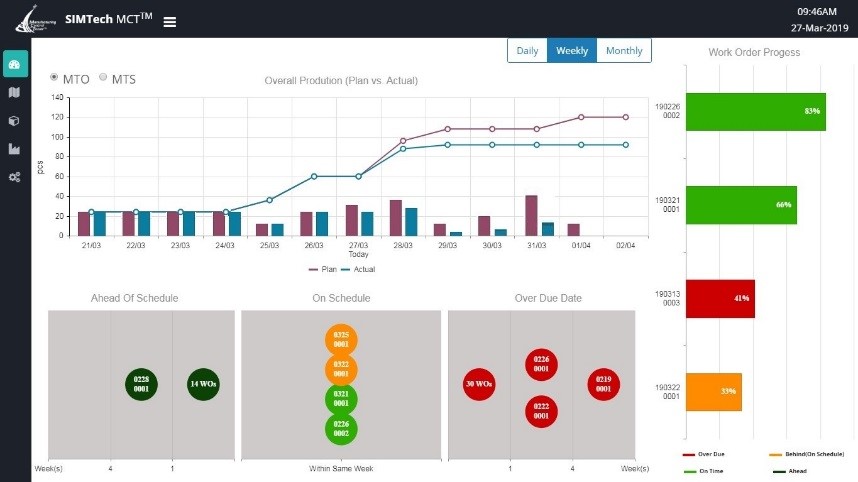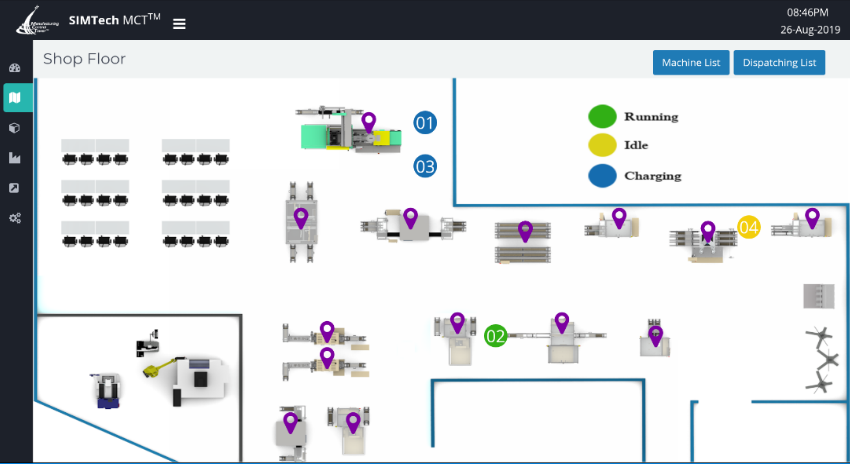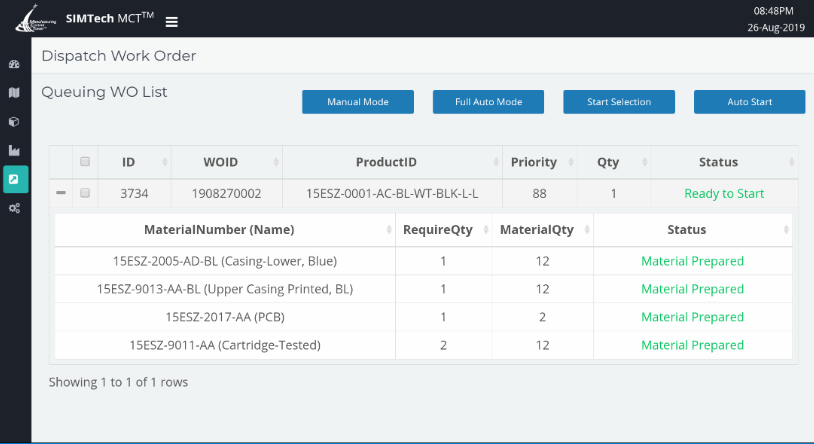Real-Time Dispatching and Tracking
The RTDT technology has the following features:
• RTDT system adopts modular architecture to build the system, giving it robustness and flexibility;
• RTDT system is generic enough to handle various scenarios occurring in shop floor production, such as high-mix high-volume (HMHV), high-mix low-volume (HMLV), and low-mix high- volume (LMHV).
• RTDT system is capable of optimally handling urgent orders scenarios with mixed WO priorities and meeting customers’ urgency delivery requirements.
• RTDT system provides options for technology adopters to choose between using either autonomous transportation system (such as AIV/AGV, etc.) for material handling if the adopter has such a system, or a manual transportation system (manual way for material handling) if the adopter does not yet have an autonomous vehicle yet.
• RTDT system is web-based and does not require installation.
To download the brochure, please click here.
Production Dashboard

The production dashboard shows production related dynamic information, such as Overall Production status (Planned vs Actual), Production Progress in terms of Over-Due, On-Schedule and Ahead-of-Schedule WOs, as well as WO Progress Details. If any WO is in Over-Due, the WO will be highlighted in WO Progress Details screen to alert person-in-charge of the WO to take immediate action, so as to shorten the response time to such an unexpected event.
Real-Time Machine Communication (RTMC)

RTMC is to fetch various machine events in real-time to support needs in production execution and tracking. RTMC realises the real-time data collection/events captured through the publish-subscribe network protocol to transports messages between producers (Machines) and consumers (Task Handlers). RTMC adopts multi-threading technology to handle multiple event producers and consumers with the capability of dynamic creation and closure of threads based on the length of the Message Queue.
The RTMC enables various real-time tracking and monitoring functionality, such as tracking static Machine and Storage, mobile Vehicle, Container, Product (Part) locations, etc. The above figure shows the real-time status of all machines on the shop floor.
Production Execution and Tracking Engine (PETE)

PETE enables WO execution control through WO prioritisation/dispatching which can be either Rule-Based WO prioritisation and dispatching (Full-Auto Mode) or manual prioritisation and dispatching (Manual Mode). The rules adopted include First-In-First-Out (FIFO), Shortest Processing Time First (SPTF), WO Priority-based, etc. In Manual Mode, the Production Manager can assign a partial quantity of a WO for execution first. RTDT realises the real-time production tracking through a Watch Dog thread that monitors all real-time machines operations and WOs execution.
Optimized Material Handling System and Fleet Management
Material Handling System (MHS) is responsible for moving the WIP work pieces from one machine to another to complete the entire process route. RTDT realises WIP handling through an optimised MHS algorithm that considers multiple factors, such as Machine status, Buffer status, WO priority and AIV/AGV current position, etc. RTDT also implements a Fleet Management System for different types of vehicles, which synergistically works with the optimised MHS to achieve an effective and efficient MHS.
Dr Zhao Yizhi George
Principal Research Engineer
☎: 6510 1625 | ✉: yzzhao@SIMTech.a-star.edu.sg
Mr Wong Ming Mao
Deputy Director, Manufacturing Productivity Technology Centre
☎: 6510 1690 | ✉: mmwong@SIMTech.a-star.edu.sg
A*STAR celebrates International Women's Day

From groundbreaking discoveries to cutting-edge research, our researchers are empowering the next generation of female science, technology, engineering and mathematics (STEM) leaders.
Get inspired by our #WomeninSTEM
.png?sfvrsn=843a4005_8)